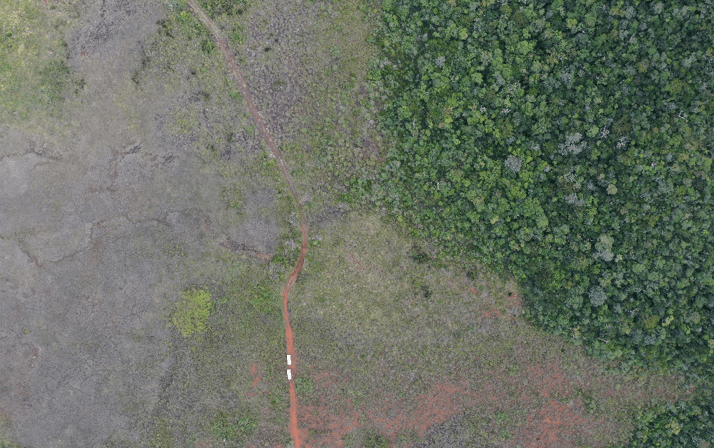- Home
- Worldwide
- CIRAD worldwide
- Projects
- RELIQUES project
Forest fragmentation on ultramafic soils in New Caledonia - RELIQUES

Fragmentation is the splitting up of a continuous forest area into smaller patches of forest that are adjacent but separated by ecological barriers such as human activities. © CIRAD
Issues
Fragmentation is the process whereby a large expanse of habitat is transformed into a number of smaller patches, isolated from each other by a matrix of habitats unlike the original. The fragmentation of forest habitats is a worldwide problem in line with the rate of global deforestation, estimated at 0.5% per year since the 1990s. Today, over 70% of forest land in the world is located less than one kilometre from a forest edge. These forest edges lead to multiple modifications in abiotic and biotic parameters.
The moist forests of New Caledonia are no exception to the global rule. On Grande-Terre, the main island in the country, these man-made pressures are mainly focused in areas where human activities are greatest. Despite the many recommendations of local and international stakeholders, fragmentation dynamics remain strong.
Apart from the loss of forest habitat, little is known about the effects of fragmentation on biodiversity. In this context, the RELIQUES project aims to undertake an in-depth study of the consequences of fragmentation of the moist forests on the ultramafic soils of Grande-Terre, in New-Caledonia.
Description
The RELIQUES project comprises 4 main, interconnected work packages:
- Spatial analysis of fragmentation: past and present status, and future scenarios;
- Structural analysis of fragmented forest edges;
- Biological analysis of fragmented forest edges;
- Development of a decision-support tool for landscape conservation.
The effects of fragmentation on biodiversity, and their evolution on the scale of Grande-Terre, will thus be measured. The aim is to propose a framework for natural forest management on ultramafic soils.
Expected changes
- Better knowledge of forest typologies and the dynamics of forest environments;
- Predictive modelling is proposed of regressive or restorative changes depending on the original environmental status and the pressures exerted;
- A roadmap is established for establishing a decision-support tool for the protection or restoration of forest stands.
Expected impacts
In the longer term, the RELIQUES project is expected to help in finding a compromise between the economic development and ecological functioning of the territories in New Caledonia, thereby leading to a better balance between conservation and use of natural resources.























